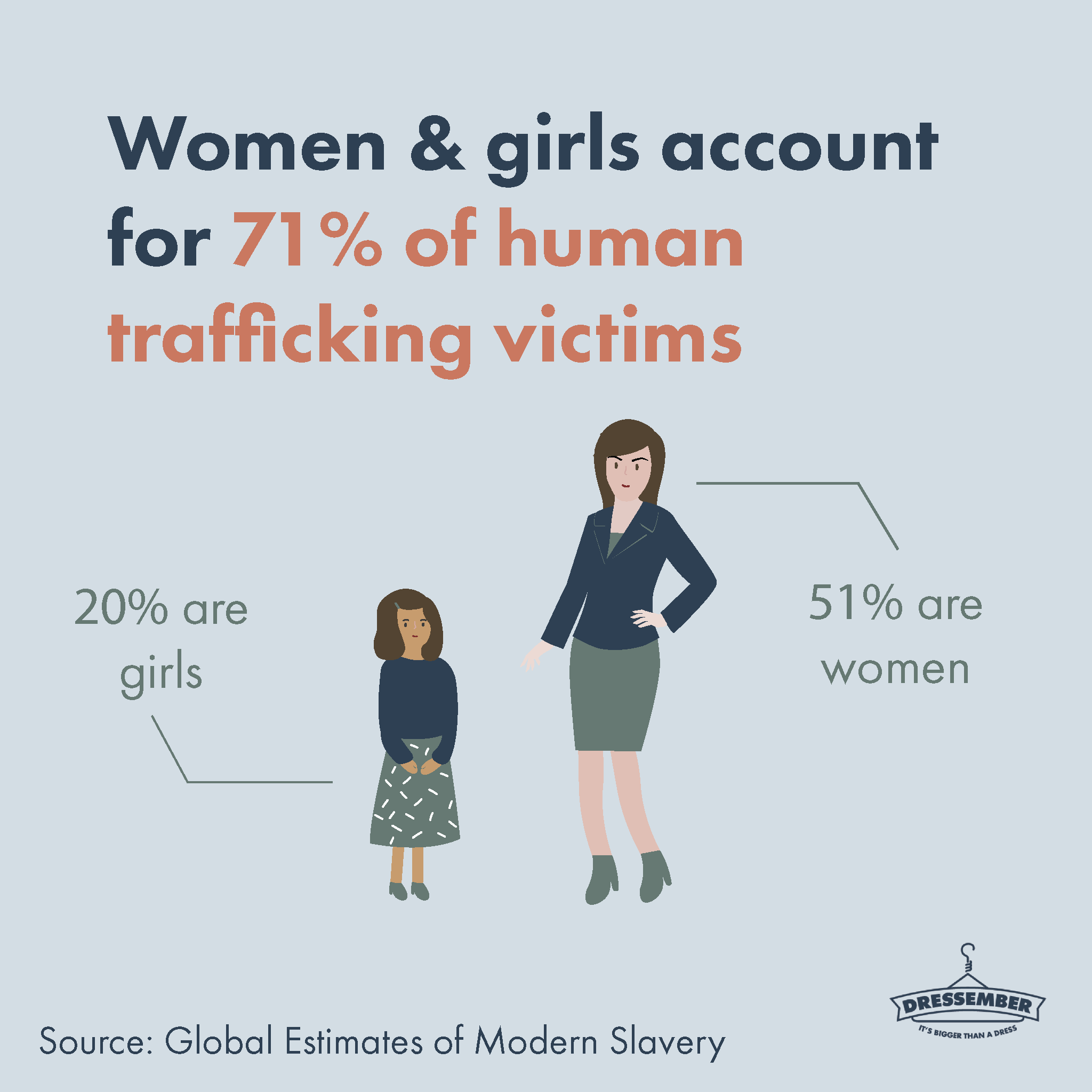Why are women more likely to be impacted by human trafficking?
Dressember Reading Day #3
Every day during the month of December, we’re answering common questions and breaking down different aspects of human trafficking on our blog and Instagram. Join us in raising awareness about the injustice of human trafficking by sharing, donating, or joining the Dressember campaign (it’s not too late!).
On any given day, 40.3 million people live as victims of modern slavery. Of those 40.3 million, a whopping 28.7 million are female—that’s 71 percent.
These statistics come from a 2016 International Labour Organization (ILO) report on the global estimates of modern slavery. The report also states that 51 percent of victims are adult women, while 20 percent are girls under the age of eighteen.
Why are these numbers so disproportionate?
Trafficking recruiters often target those in vulnerable positions — the more vulnerable, the easier to exploit. Poverty, illiteracy, lack of education, gender discrimination and lack of job opportunities affect many women around the world. According to the American Civil Liberties Union (ACLU), “The inequalities women face in status and opportunity worldwide make women particularly vulnerable to trafficking.”
These issues will often lead women to migrate, becoming especially susceptible to trafficking. The U.S. Department of State estimates that 14,500-17,500 people are smuggled into the U.S. each year.
Who else is vulnerable?
Vulnerable communities such as homeless youth, runaways, youth in the welfare or justice systems, or those with addictions to drugs are also susceptible to human trafficking.
How do traffickers prey on these vulnerabilities?
Traffickers can sweet-talk victims with false promises of decent wages and better lives. While some victims are coerced to work in the sex trade, others are promised better opportunities, only to be forced to perform other types of labor, like factory, sweatshop, agricultural or domestic work.
Traffickers also use different tactics to coerce victims to stay. Victims can be isolated from the outside world and cut off from their friends and family. 24% of victims said their employers would often withhold or threaten to withhold due payment. 17% of victims reported threats of violence, 16% cited acts of physical violence, and 12% were forced into staying because of threats against family members or loved ones. 7% of female victims also reported acts of sexual violence.
What should I do if I see something suspicious?
No one deserves to have their freedom taken away. Those in vulnerable positions should be protected and uplifted, not exploited. If you suspect an occurrence of human trafficking, call the National Human Trafficking Hotline at 1-888-373-7888 or visit their website. This organization and many others work tirelessly to protect survivors and prevent human trafficking from occurring. By partnering with Dressember, you are joining the movement and making a difference in the lives of many.
Further Reading:
Noy Thrupkaew’s TED Talk: Human Trafficking is all around you. Here is how it works.
Coming from Canada, you can give & join the Canadian campaign at www.dressember2019.ca >>
About the Author
Micaela Ricaforte is a senior journalism major at Azusa Pacific University. In addition to writing, she is passionate about storytelling through photography and design.


